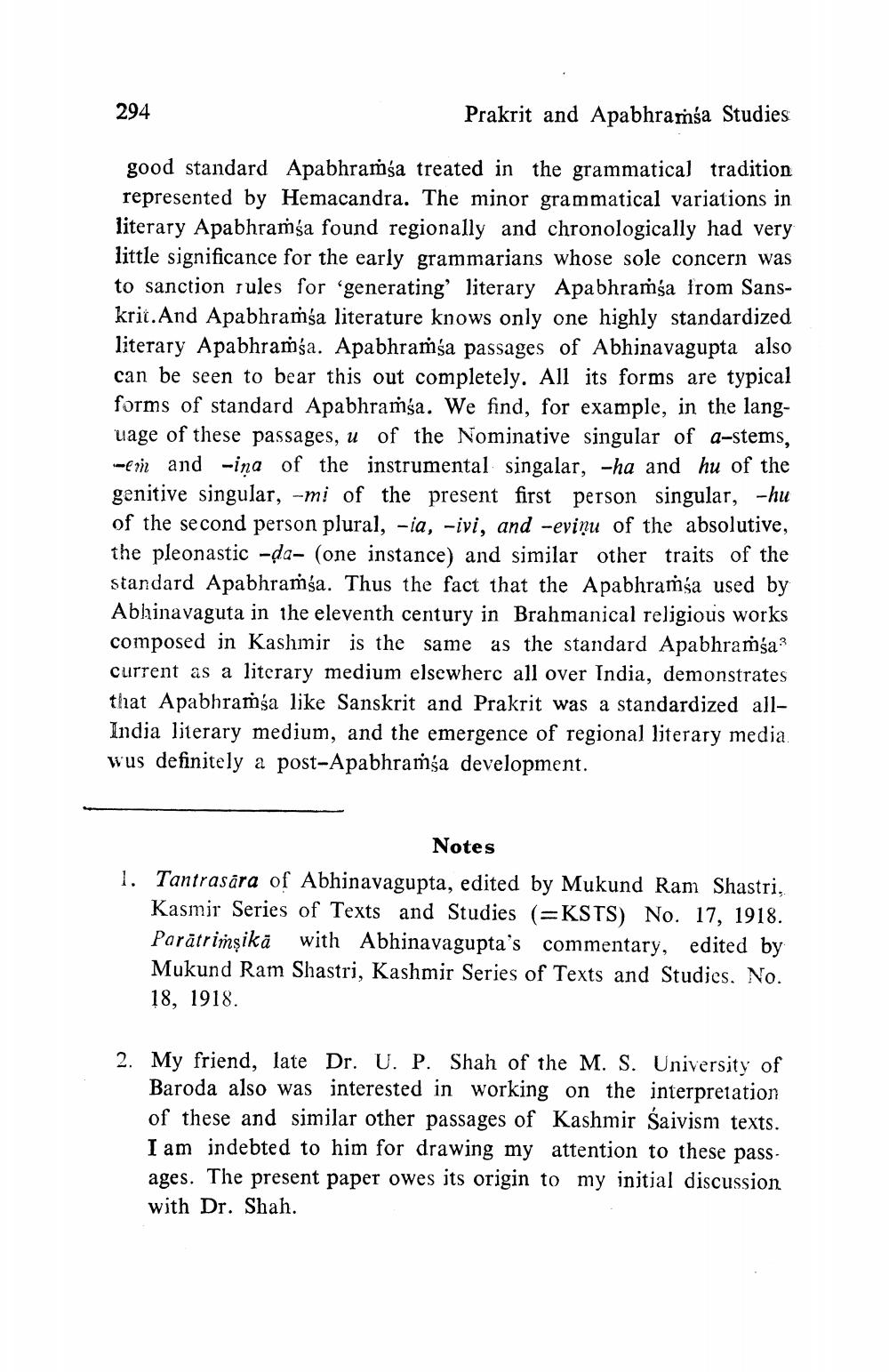________________
294
Prakrit and Apabhramsa Studies
good standard Apabhraṁsa treated in the grammatical tradition represented by Hemacandra. The minor grammatical variations in literary Apabhramsa found regionally and chronologically had very little significance for the early grammarians whose sole concern was to sanction rules for 'generating literary Apabhramśa from Sanskrit.And Apabhramśa literature knows only one highly standardized literary Apabhraņģa. Apabhraṁsa passages of Abhinavagupta also can be seen to bear this out completely. All its forms are typical forms of standard Apabhramsa. We find, for example, in the language of these passages, u of the Nominative singular of a-stems, - and -iņa of the instrumental singalar, -ha and hu of the genitive singular, -mi of the present first person singular, -hu of the second person plural, -ia, -ivi, and -eviņu of the absolutive, the pleonastic -da- (one instance) and similar other traits of the standard Apabhramśa. Thus the fact that the Apabhraṁsa used by Abhinavaguta in the eleventh century in Brahmanical religious works composed in Kashmir is the same as the standard Apabhramsa? current as a literary medium elsewhere all over India, demonstrates that Apabhramsa like Sanskrit and Prakrit was a standardized allIndia literary medium, and the emergence of regional literary media. wus definitely a post-Apabhraṁsa development.
Notes 1. Tantrasära of Abhinavagupta, edited by Mukund Ram Shastri,
Kasmir Series of Texts and Studies (=KSTS) No. 17, 1918. Parātrimşikā with Abhinavagupta's commentary, edited by Mukund Ram Shastri, Kashmir Series of Texts and Studies. No. 18, 1918.
2. My friend, late Dr. U. P. Shah of the M. S. University of
Baroda also was interested in working on the interpreiation of these and similar other passages of Kashmir Śaivism texts. I am indebted to him for drawing my attention to these passages. The present paper owes its origin to my initial discussion with Dr. Shah.




